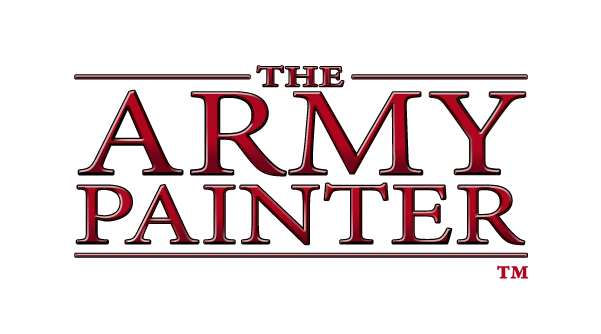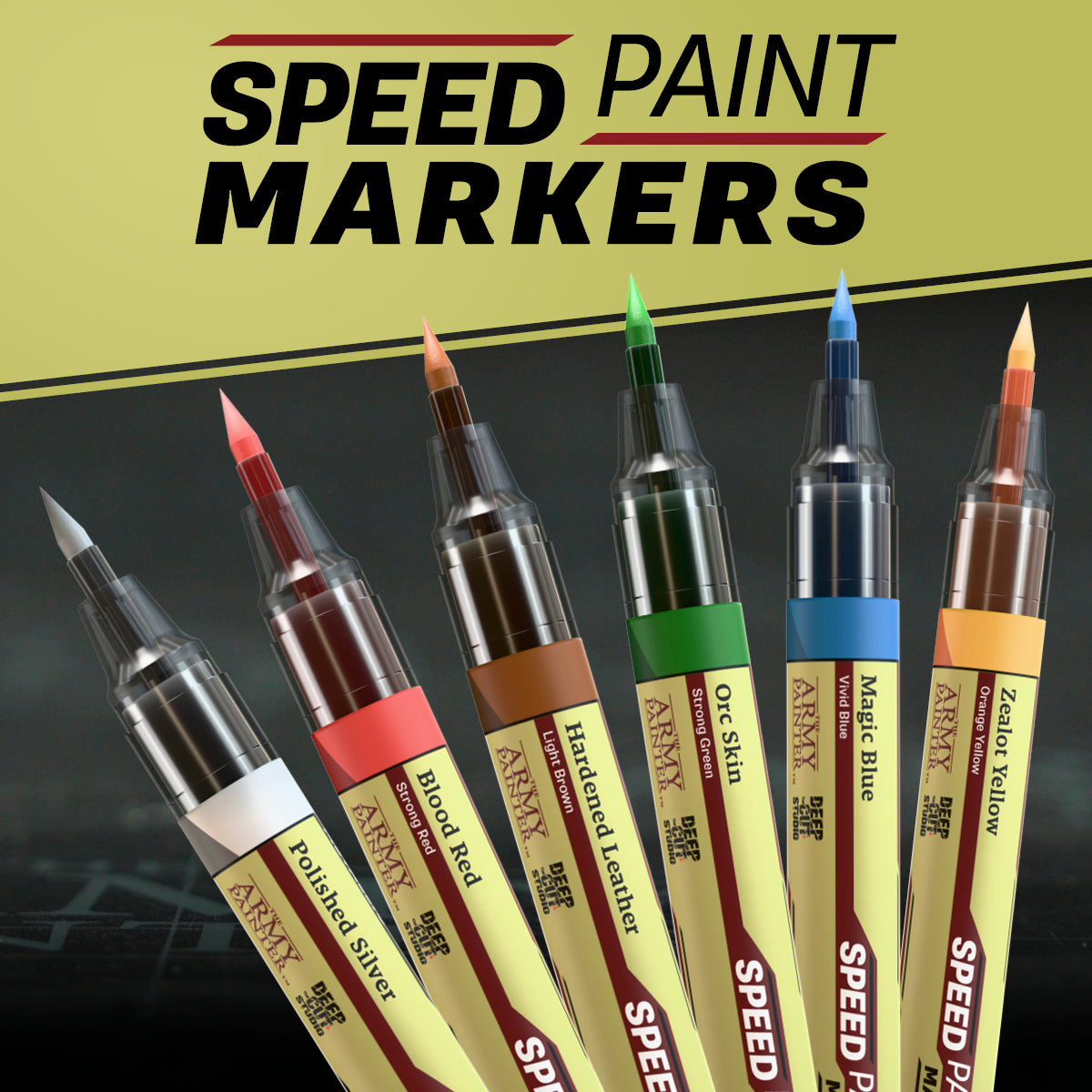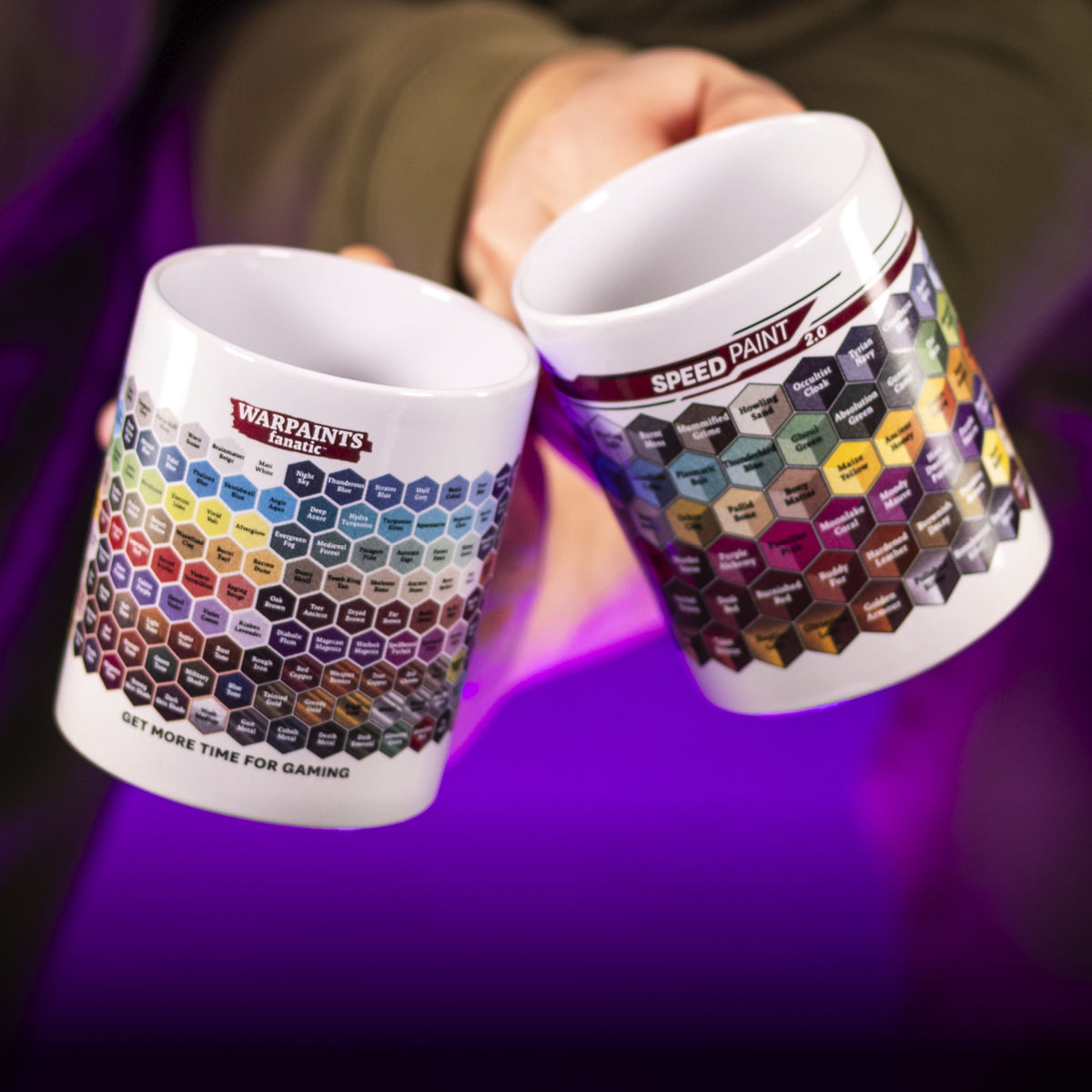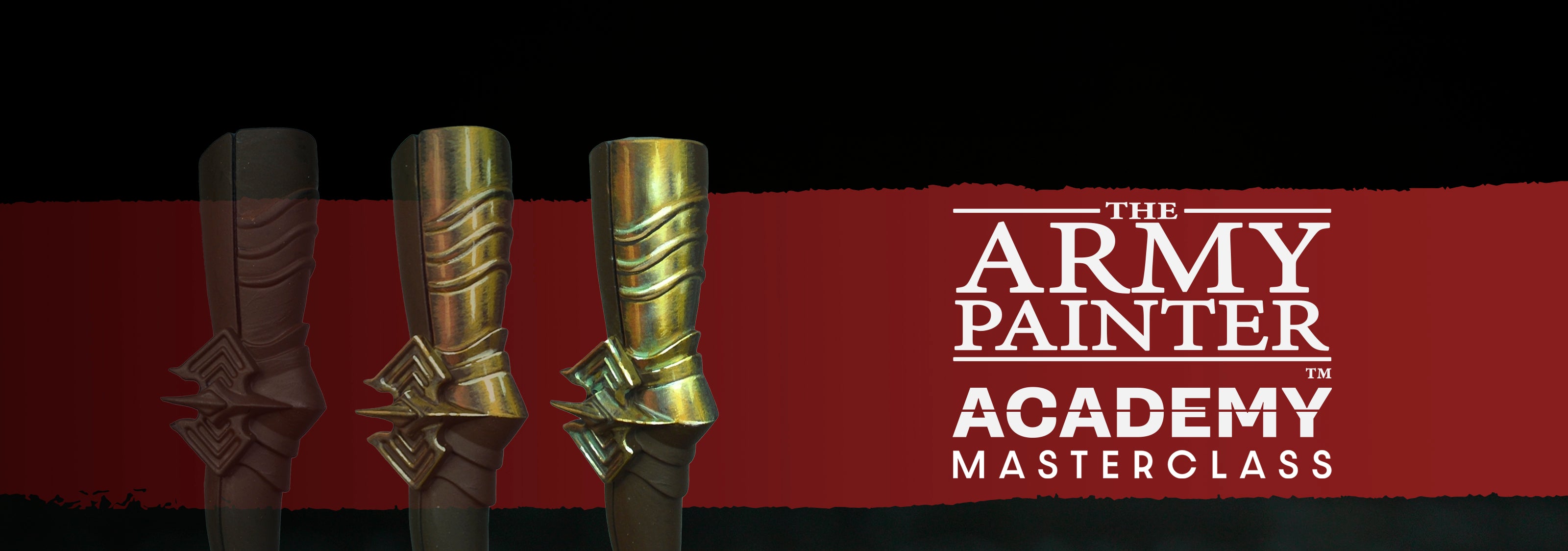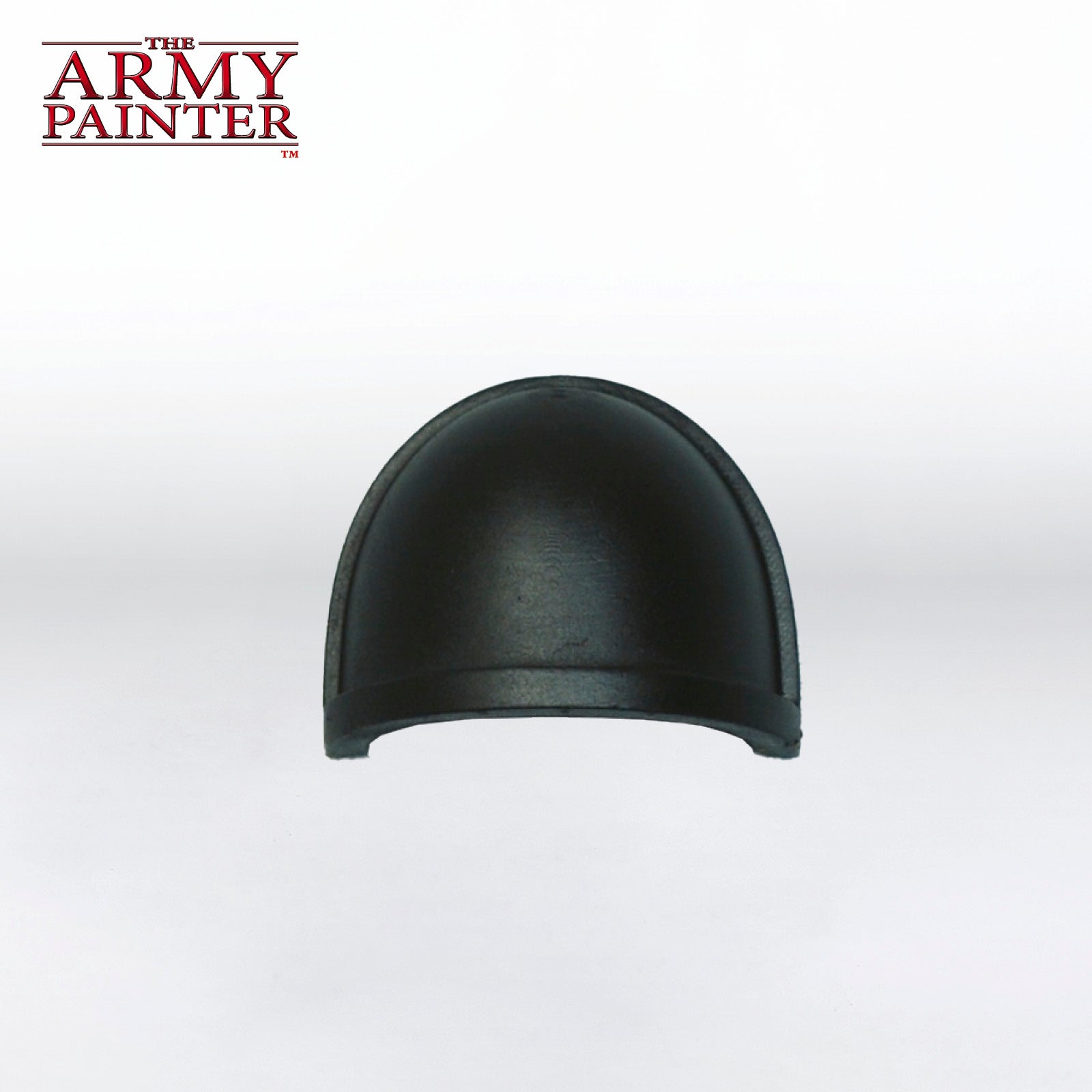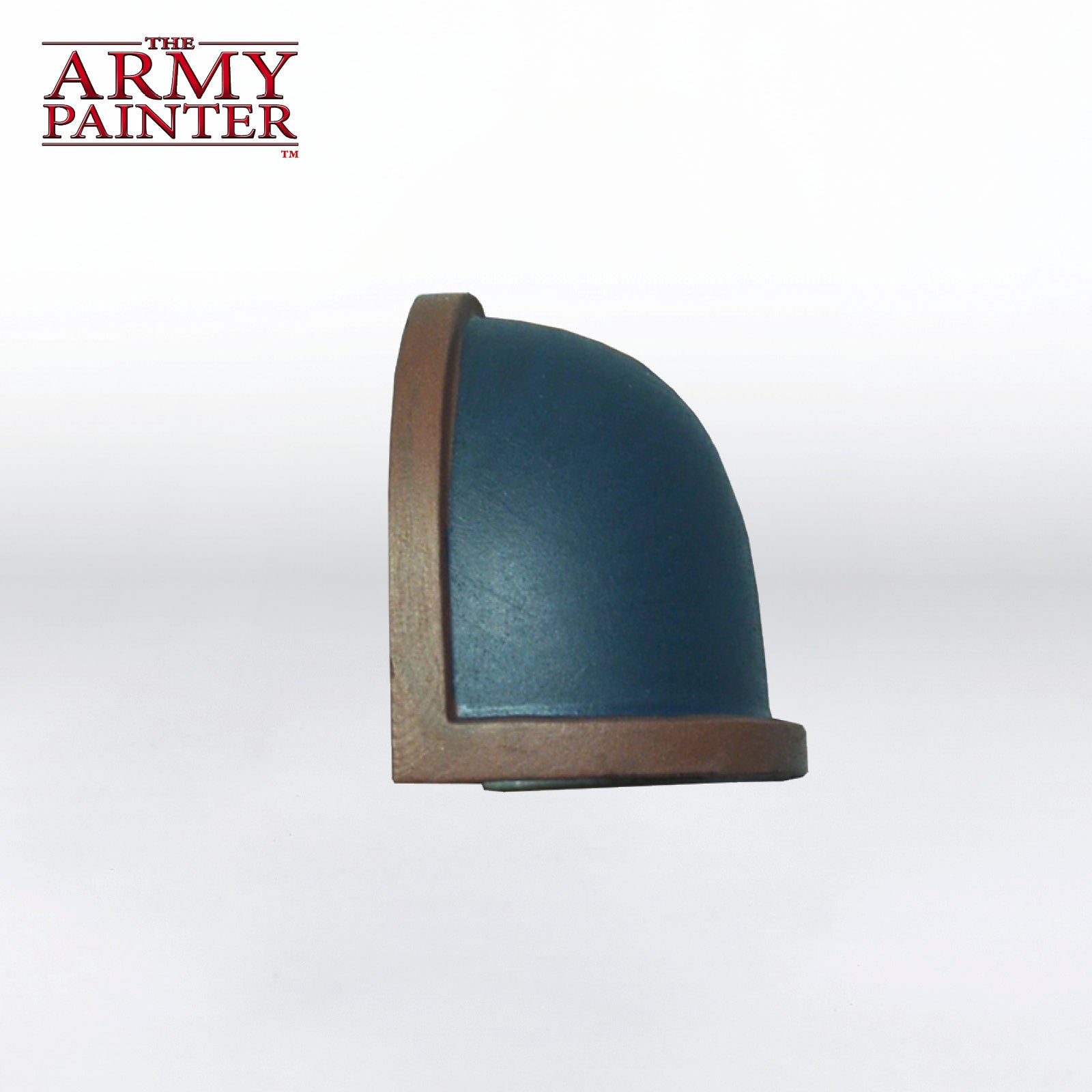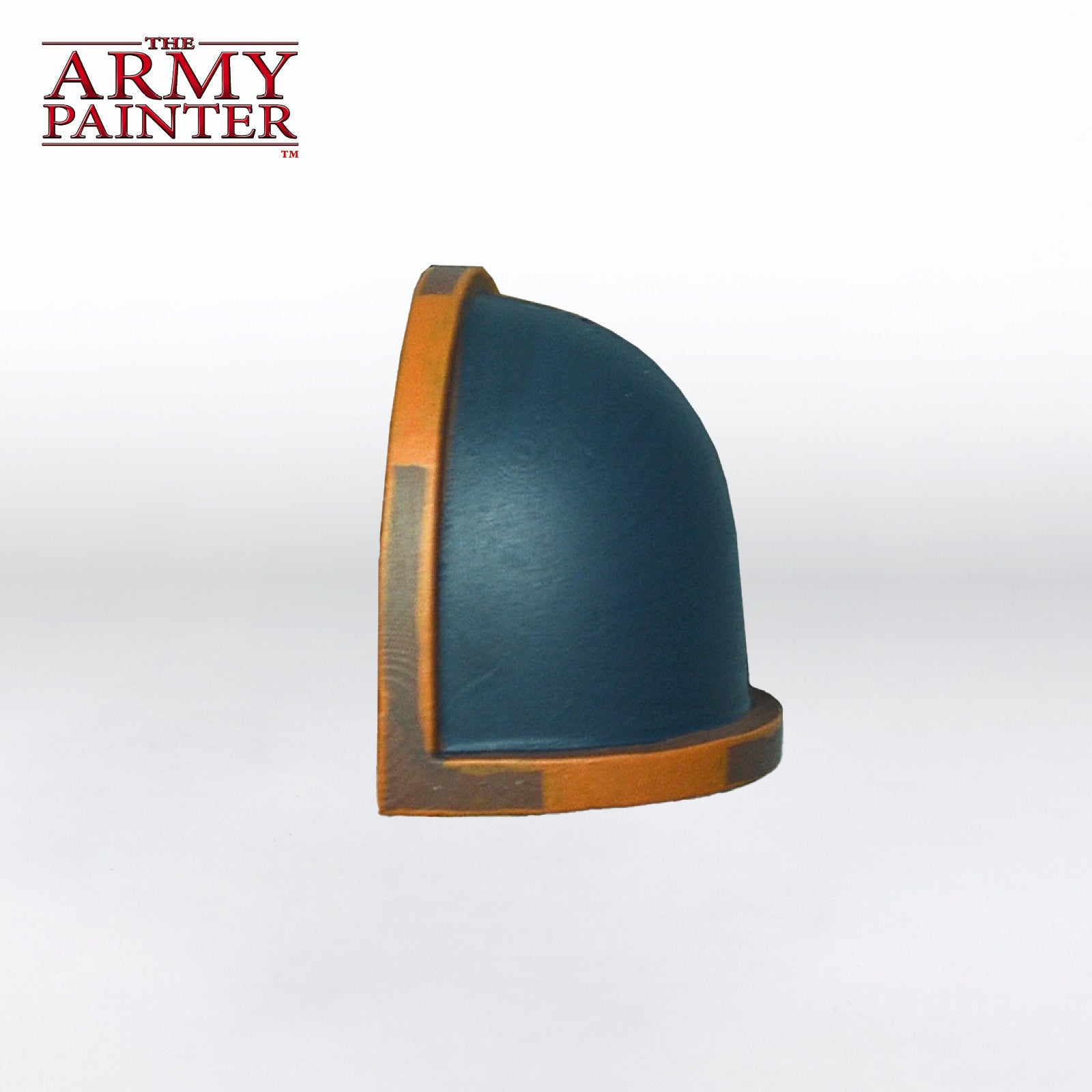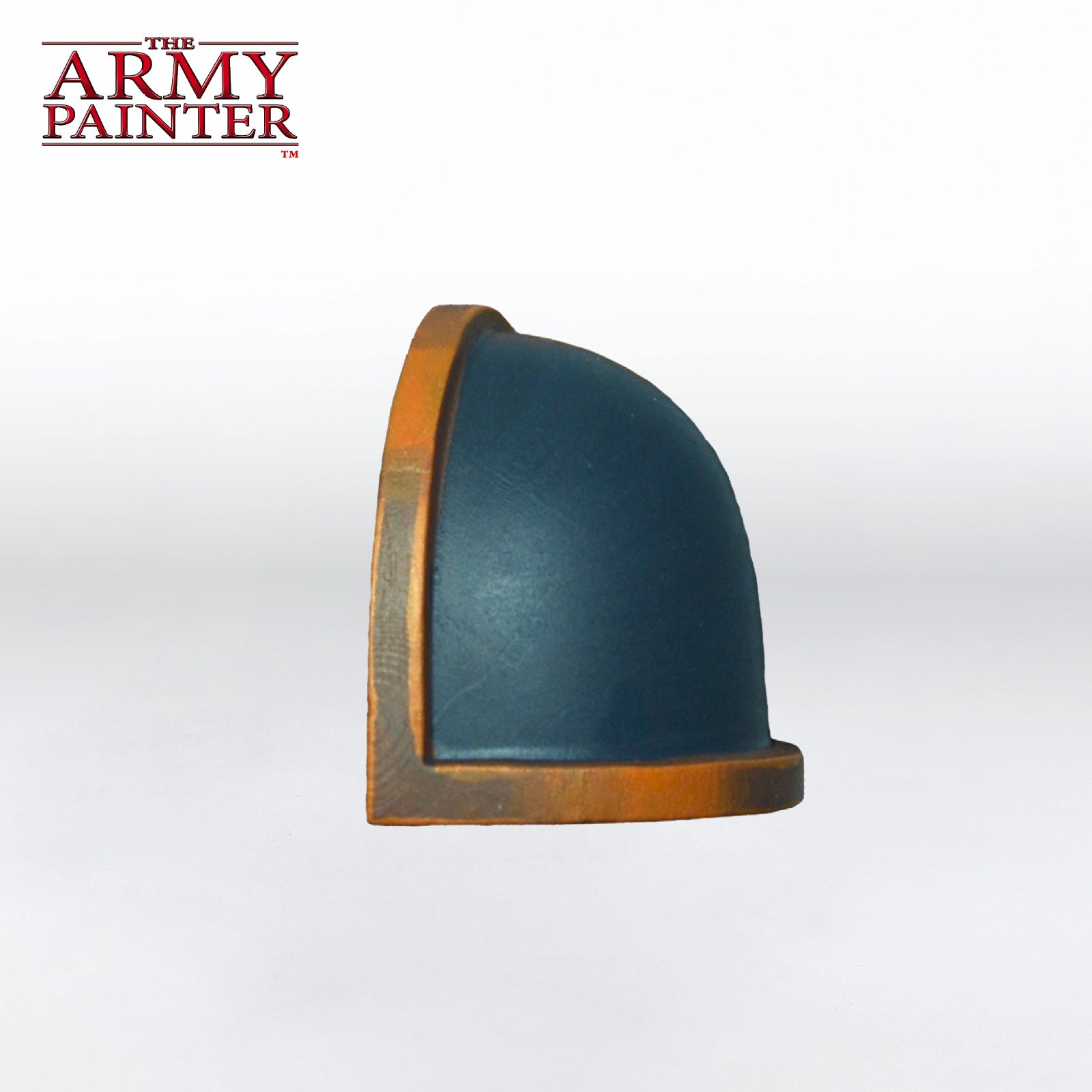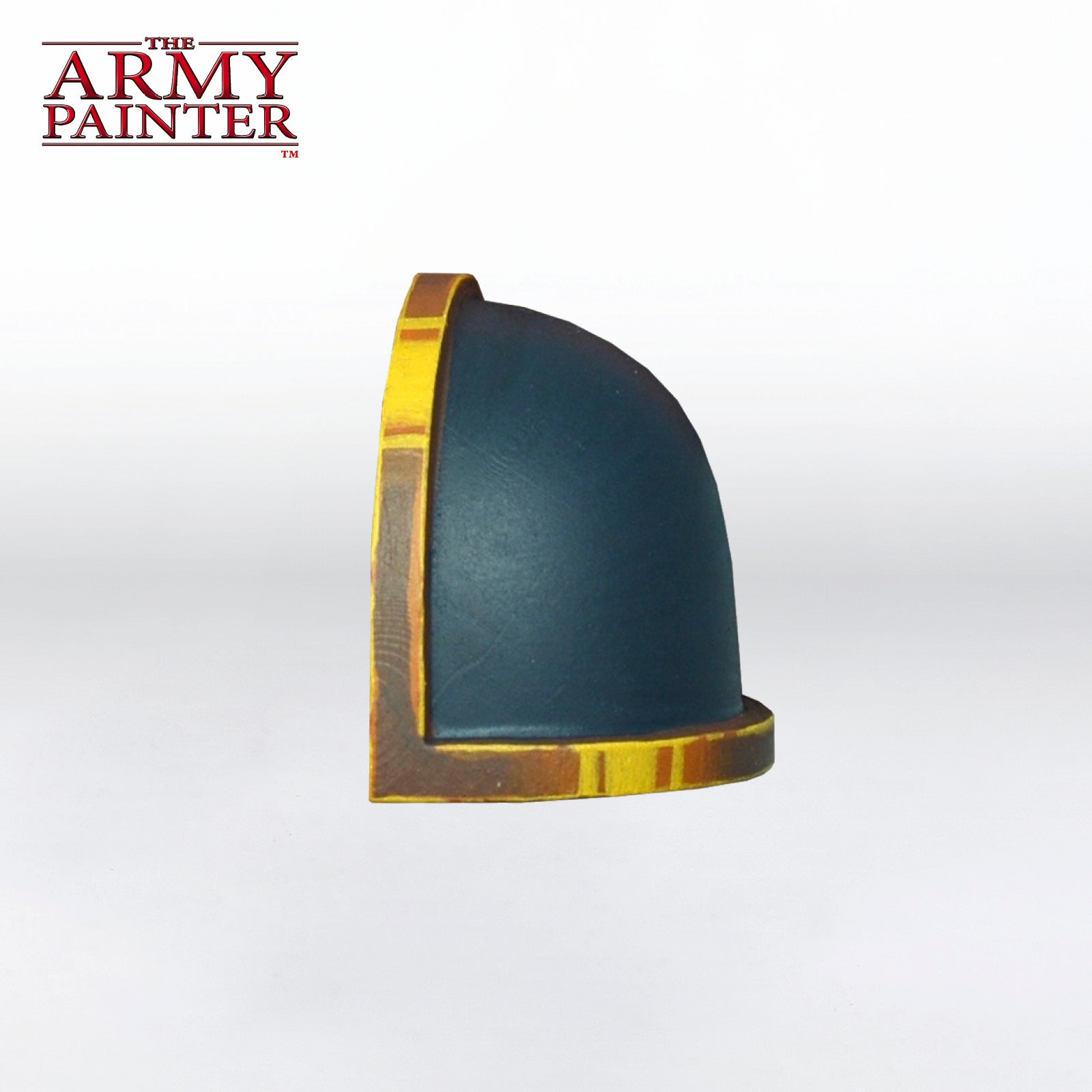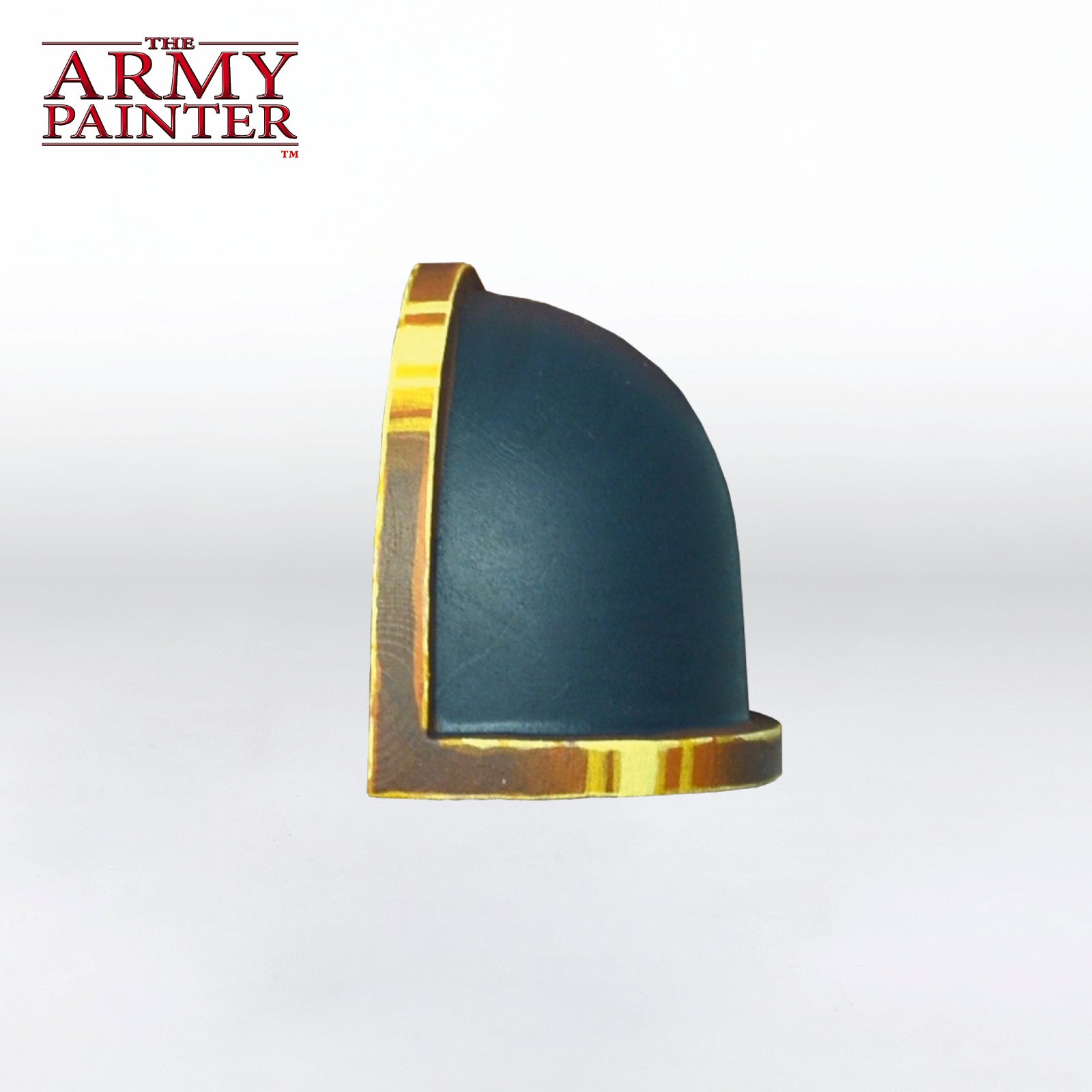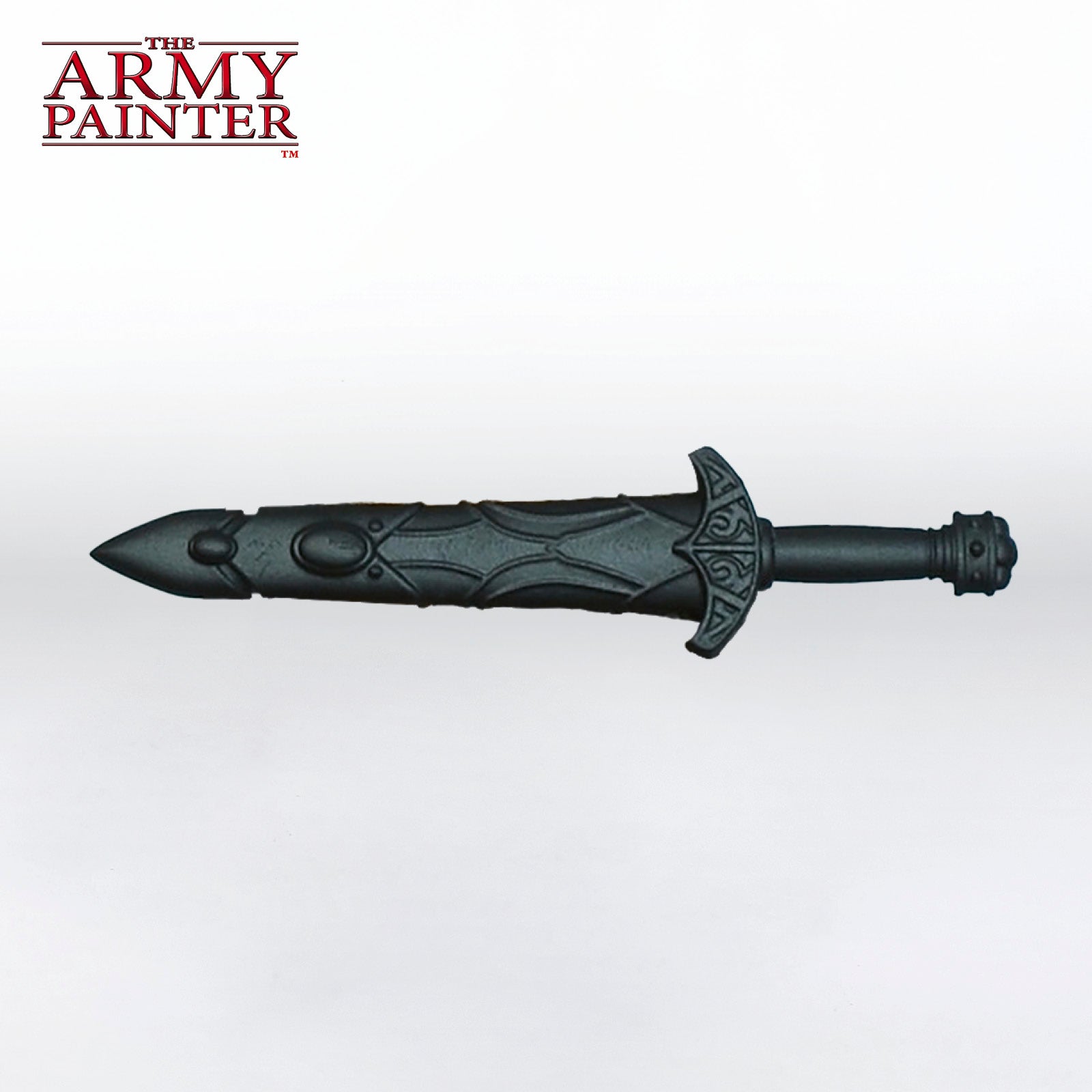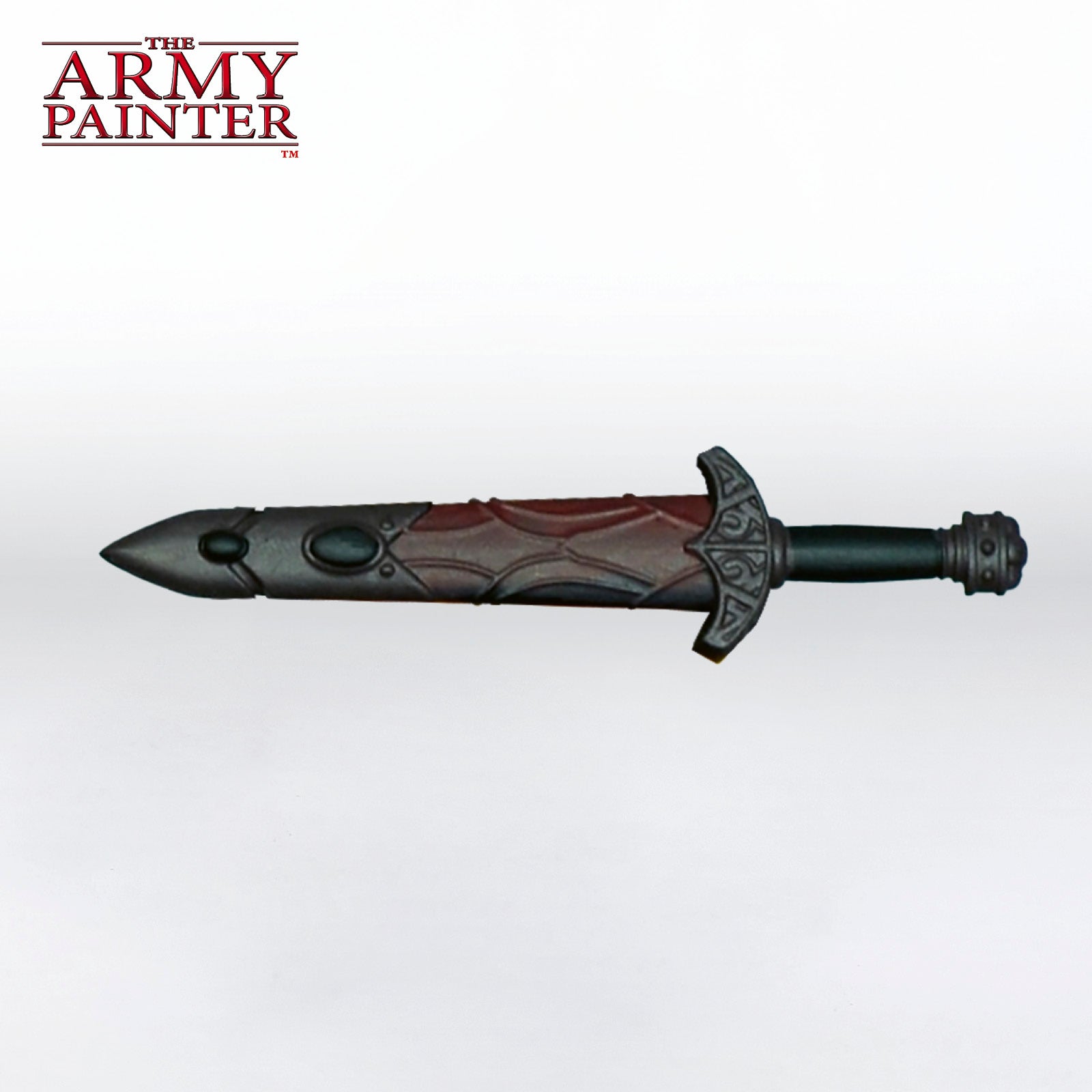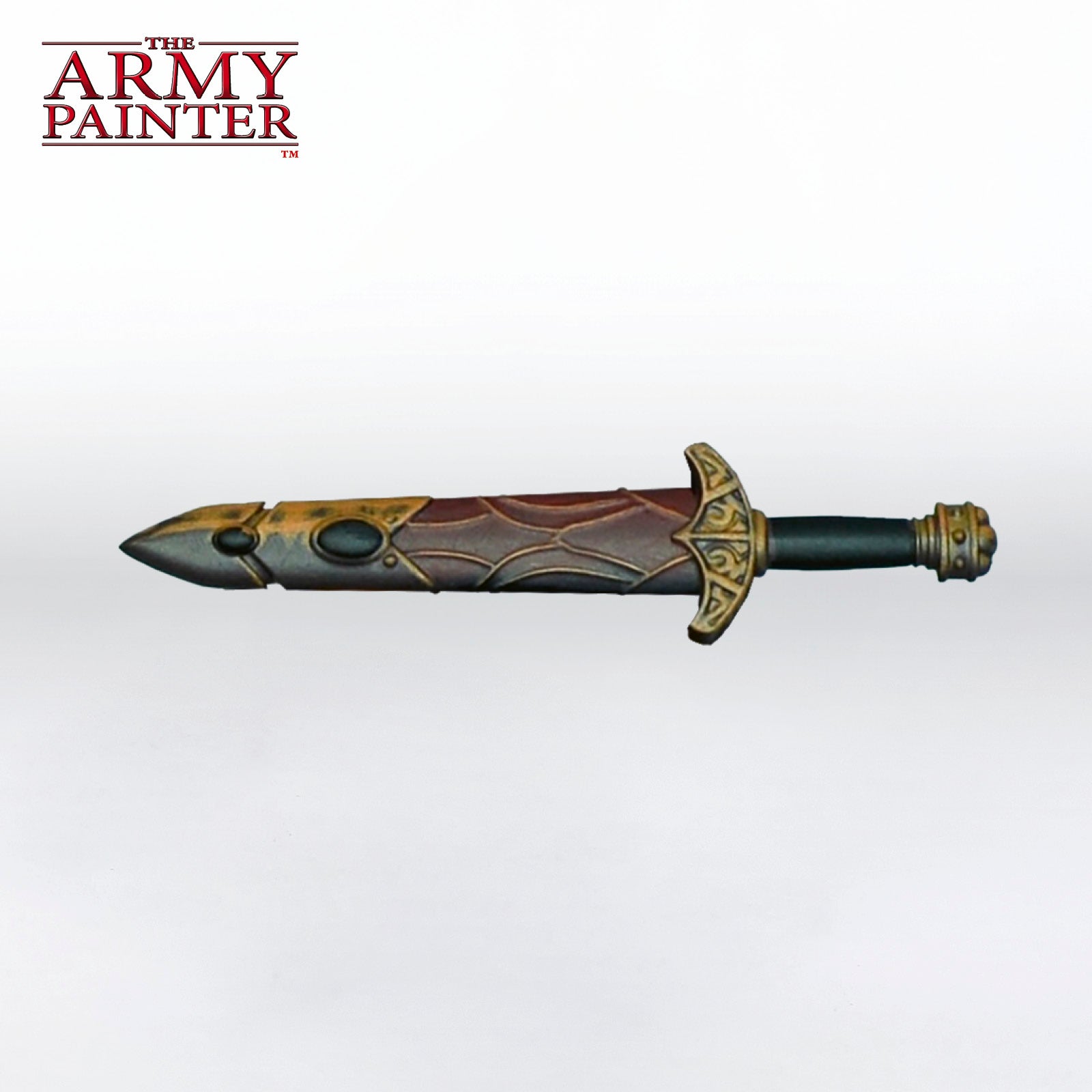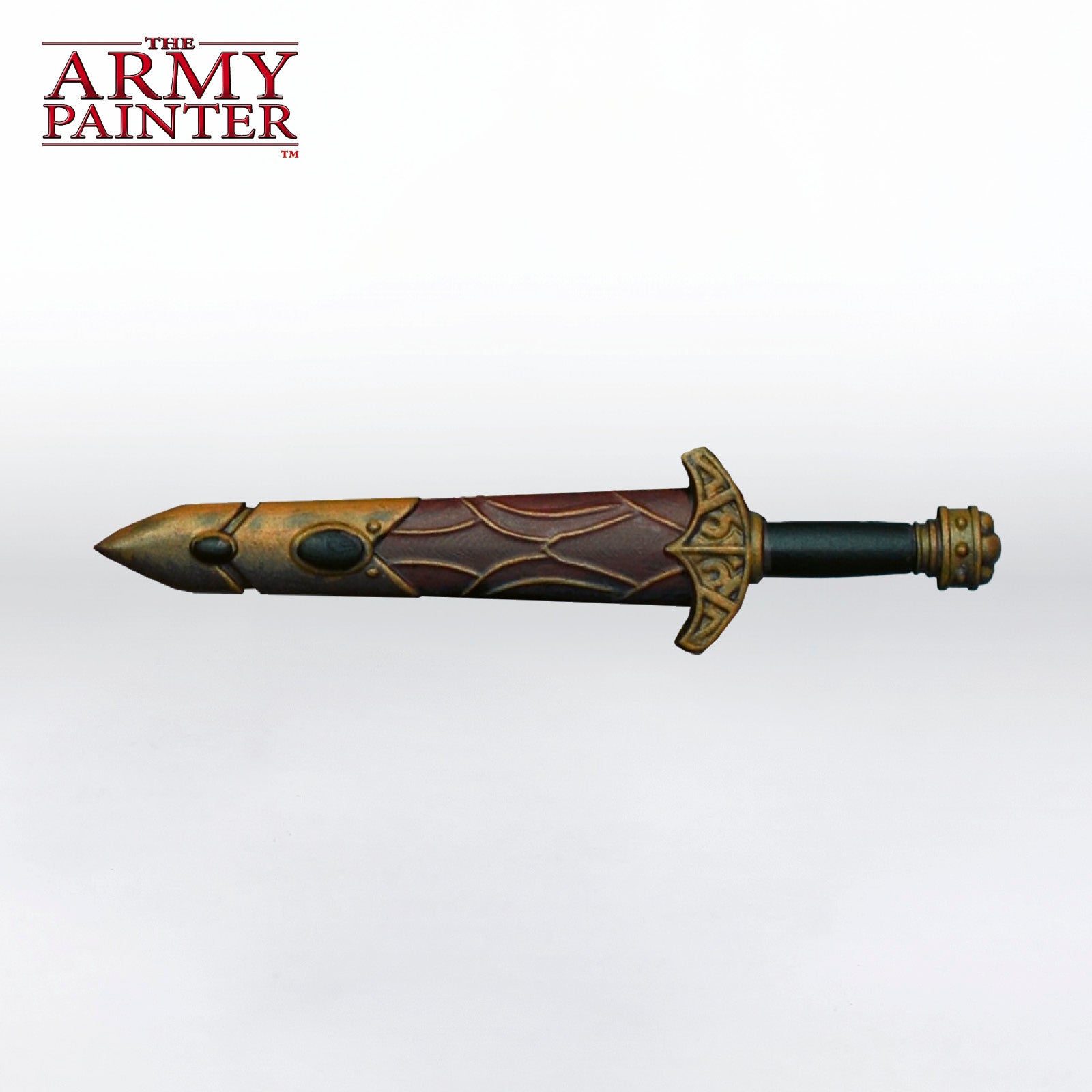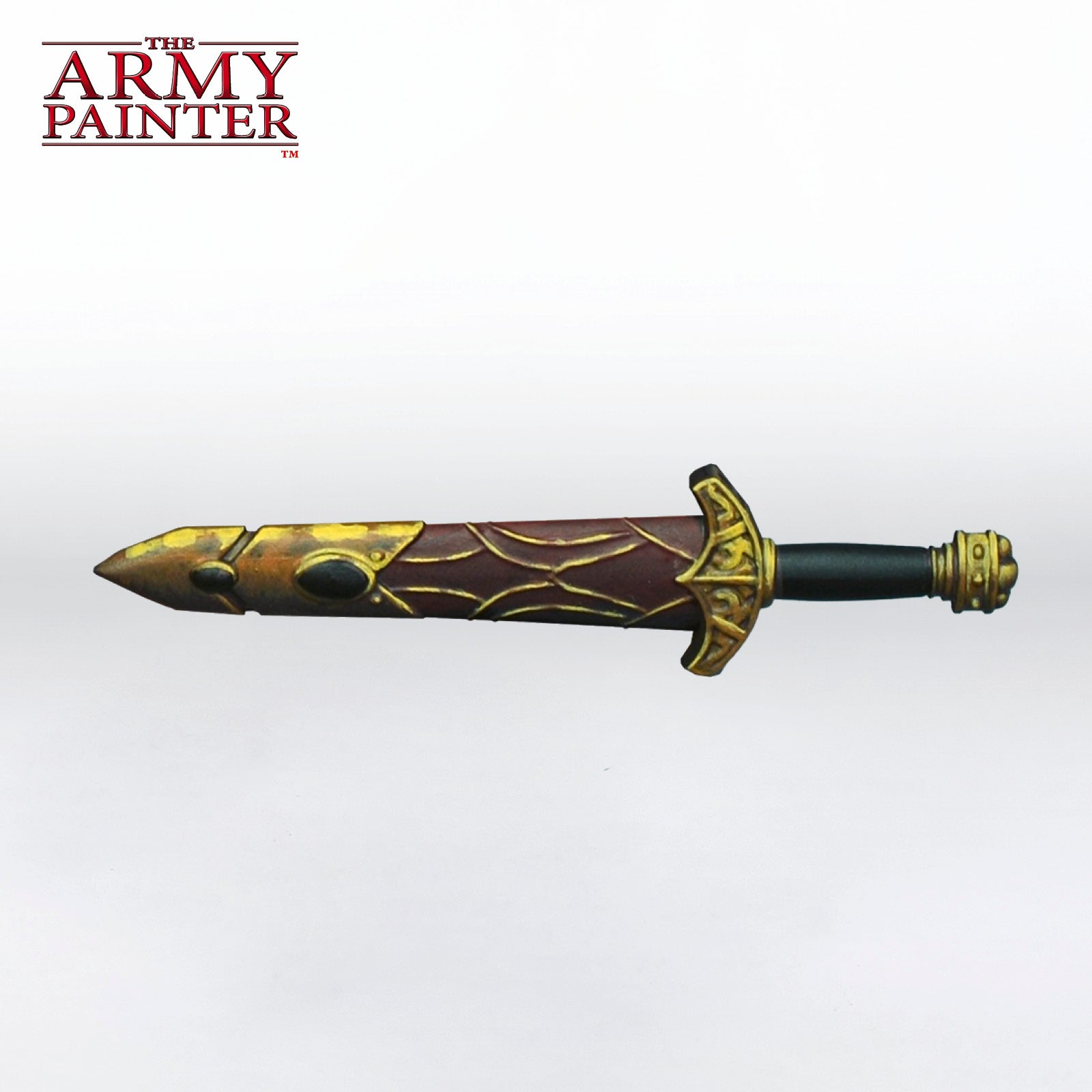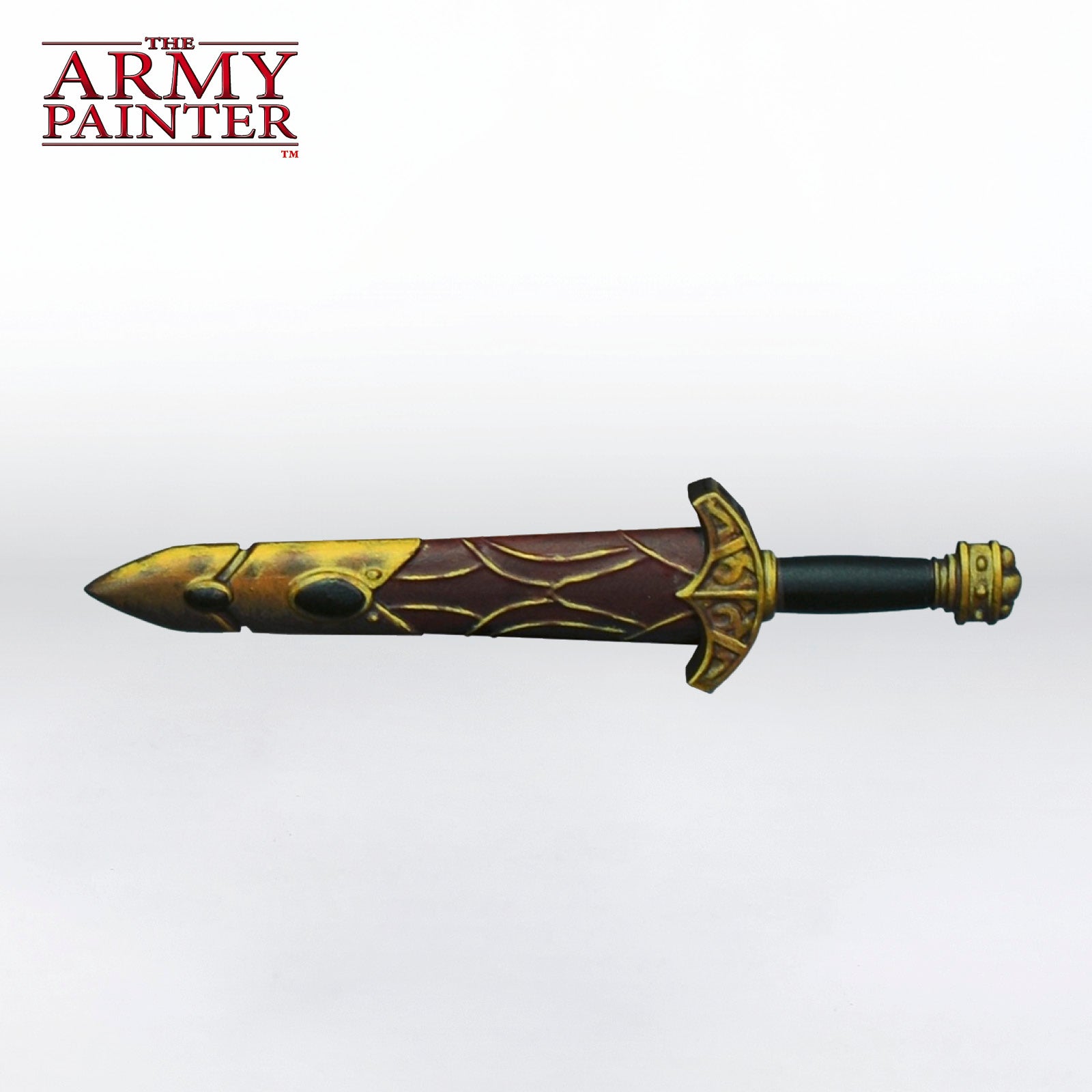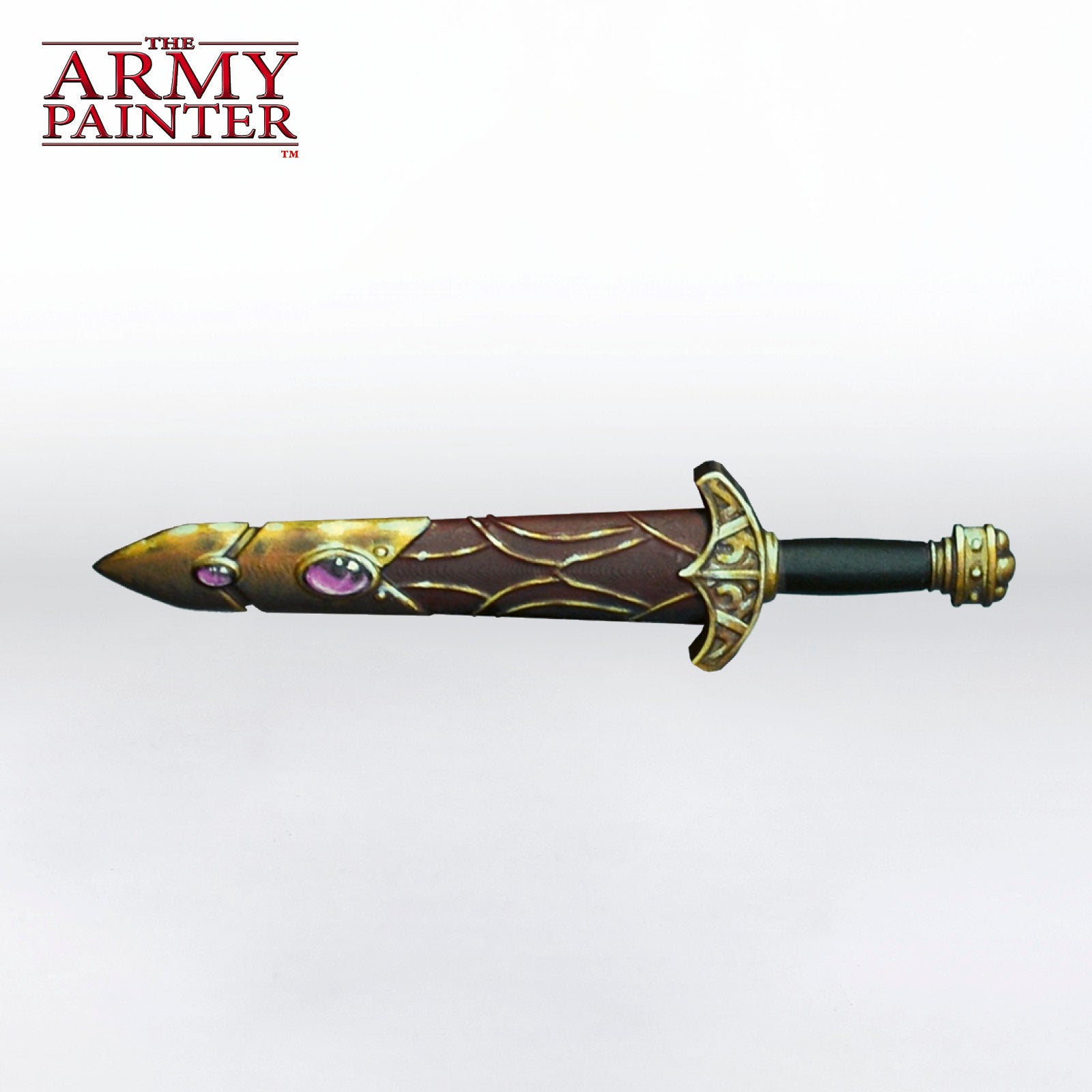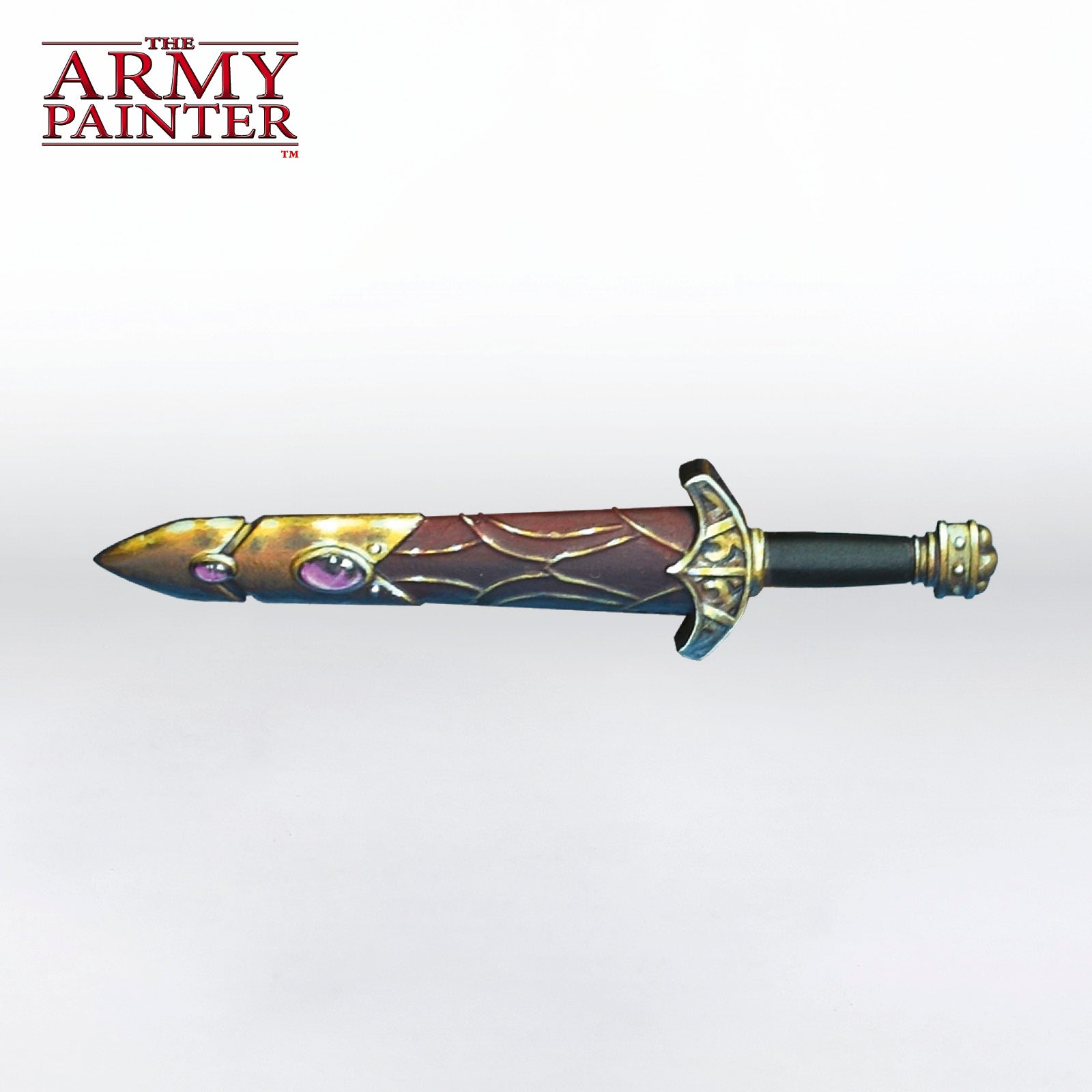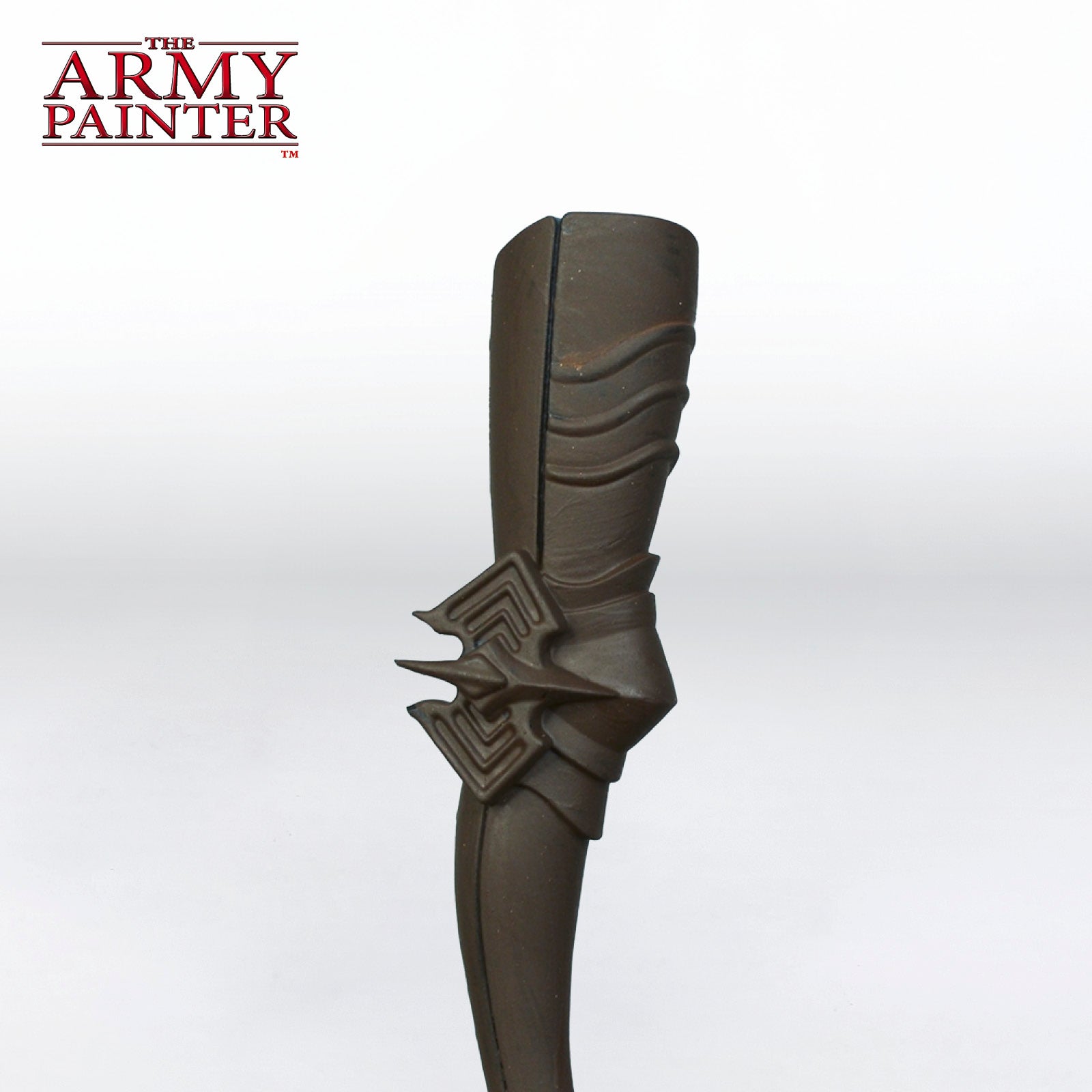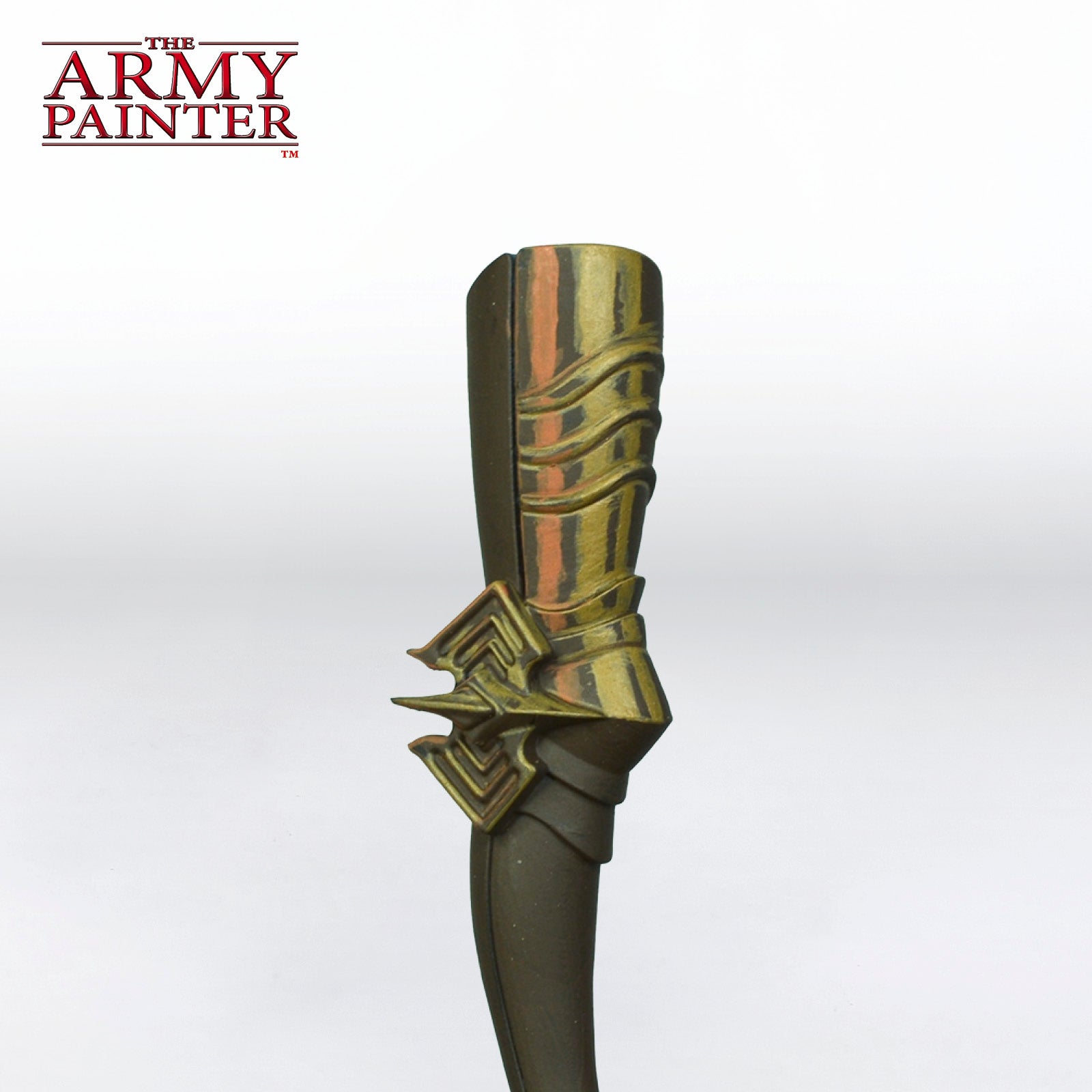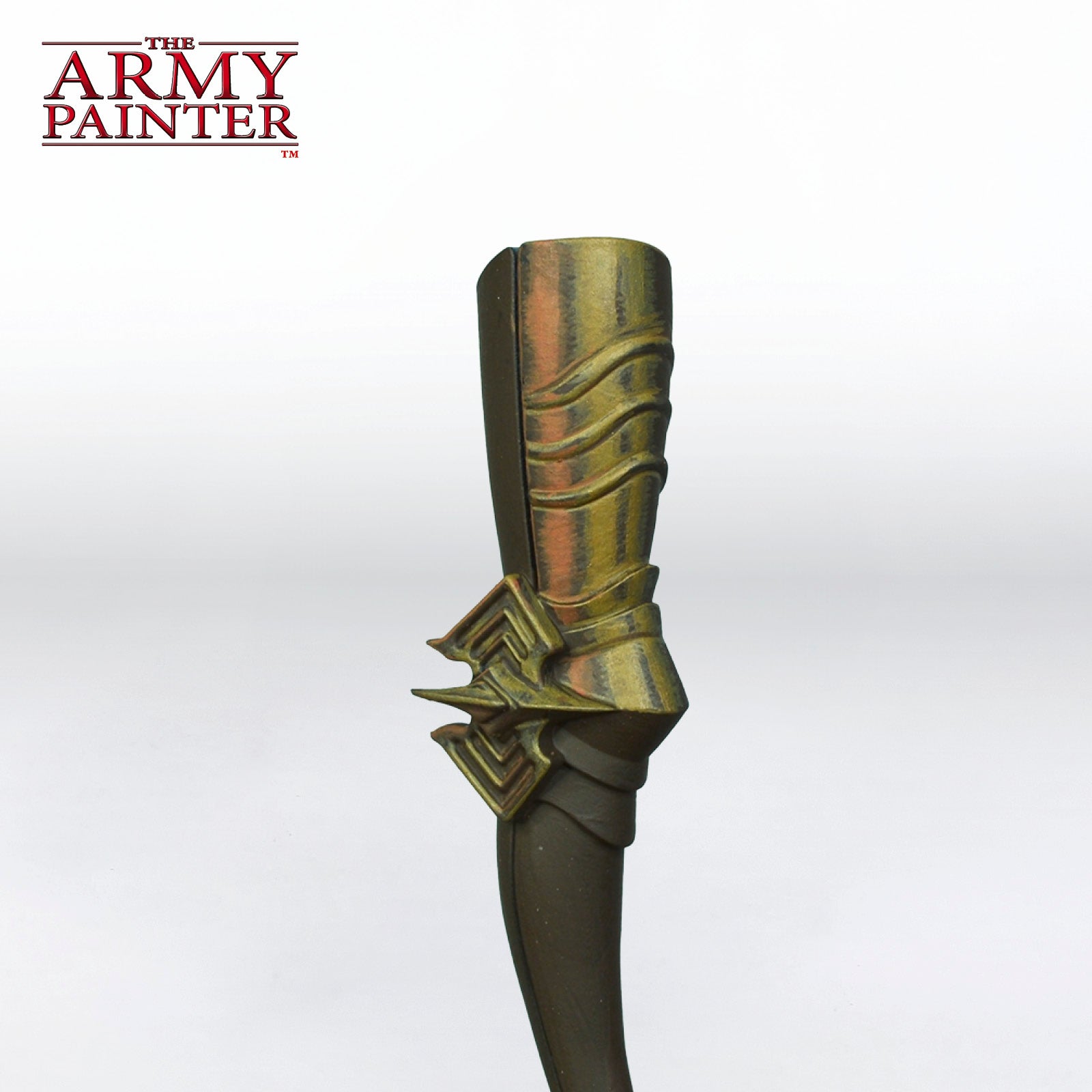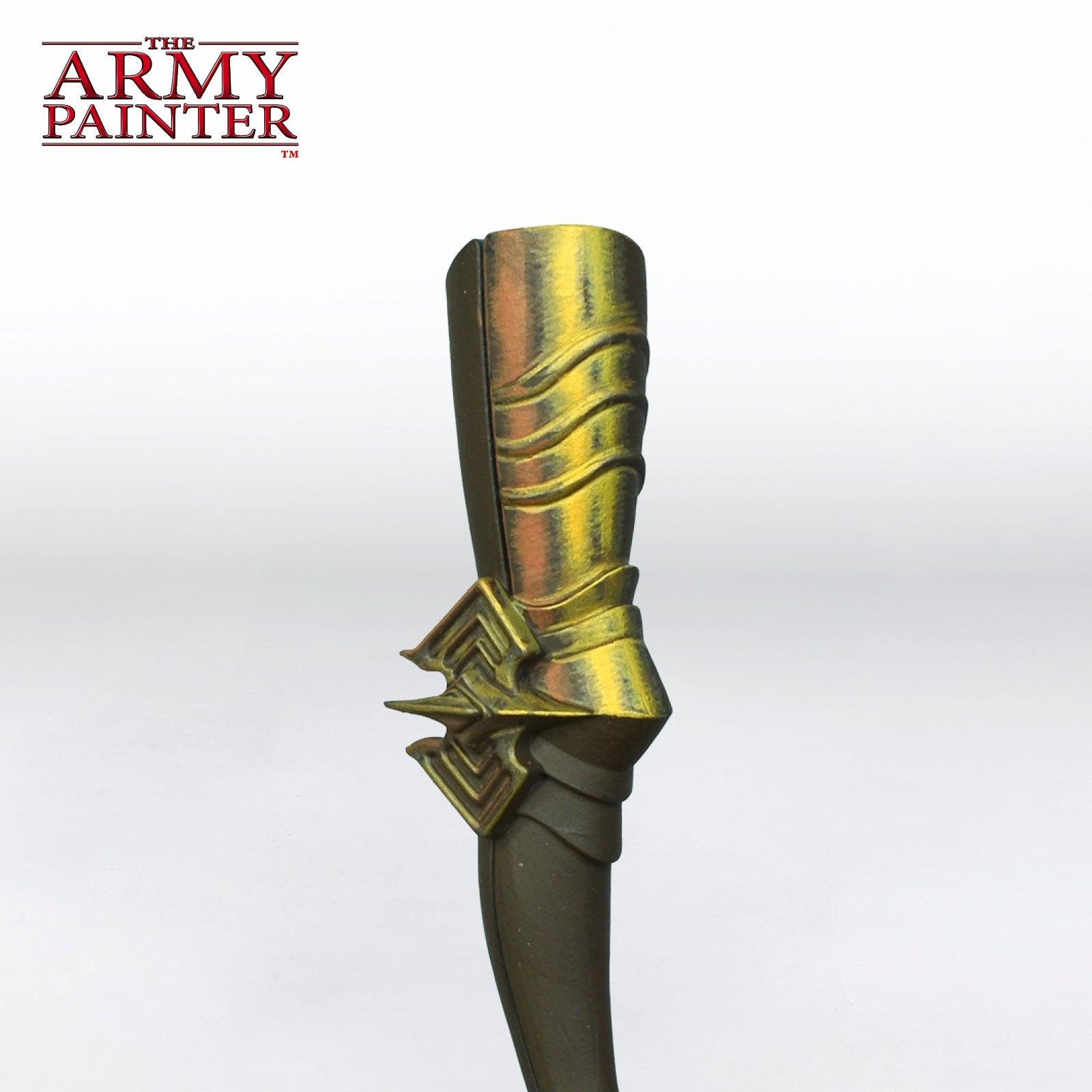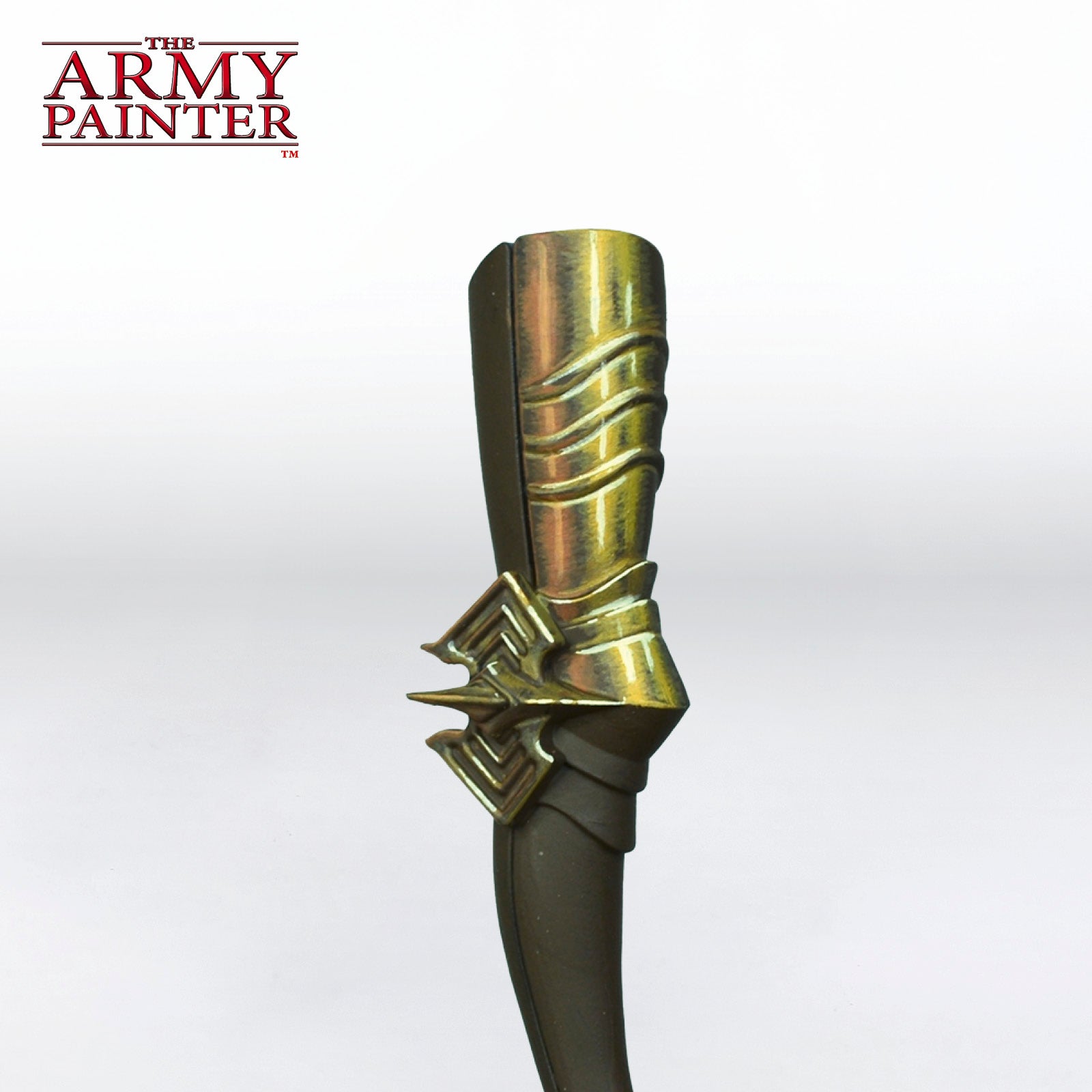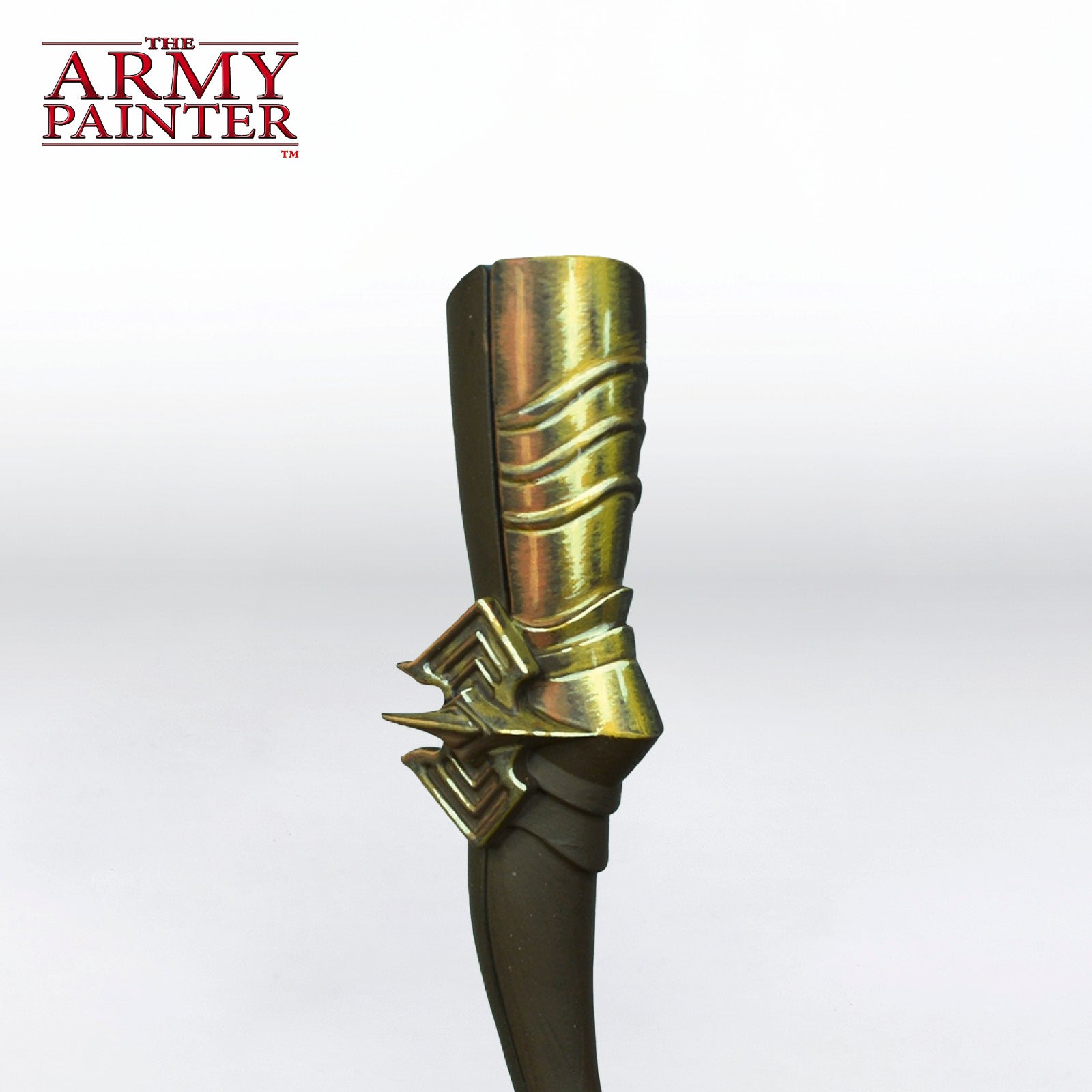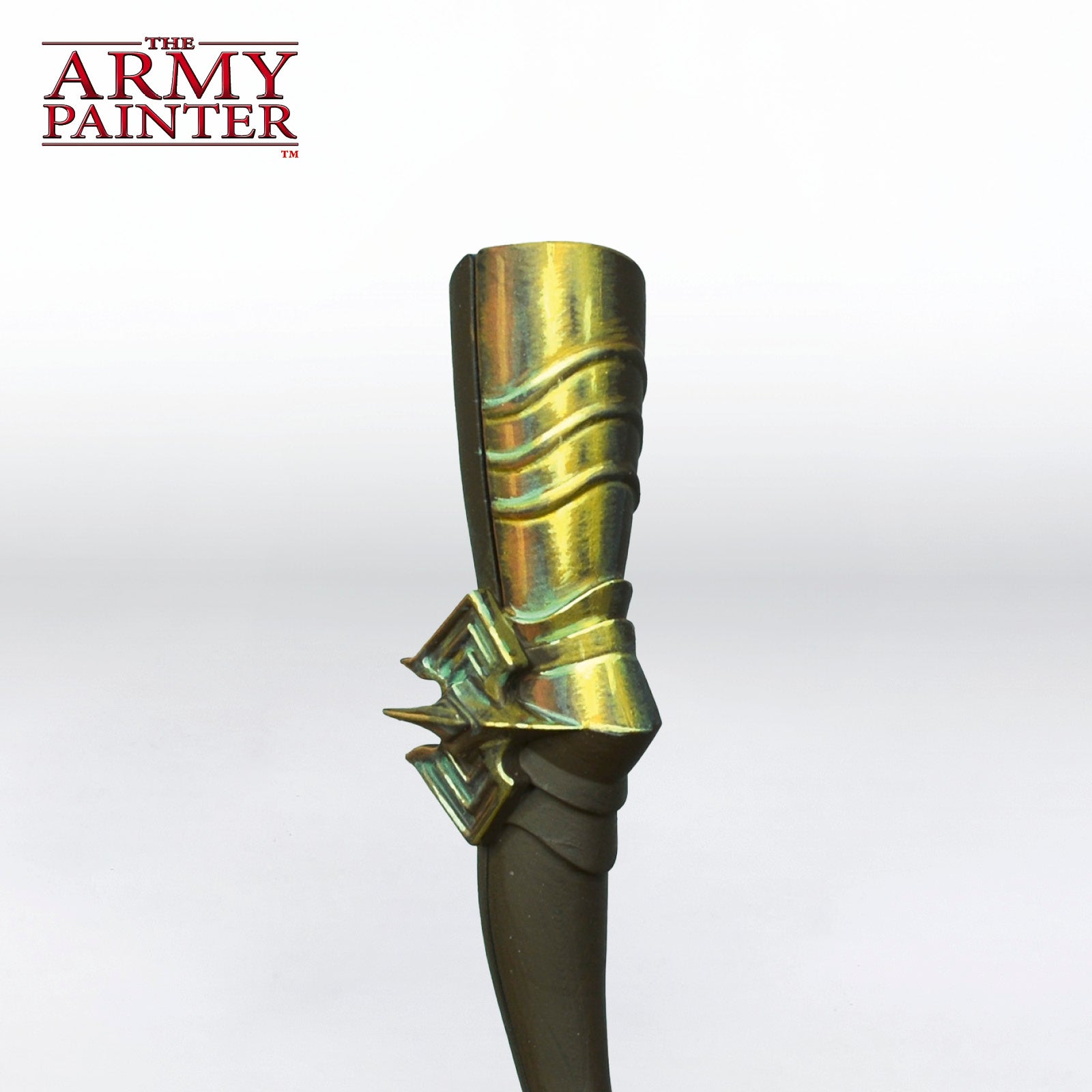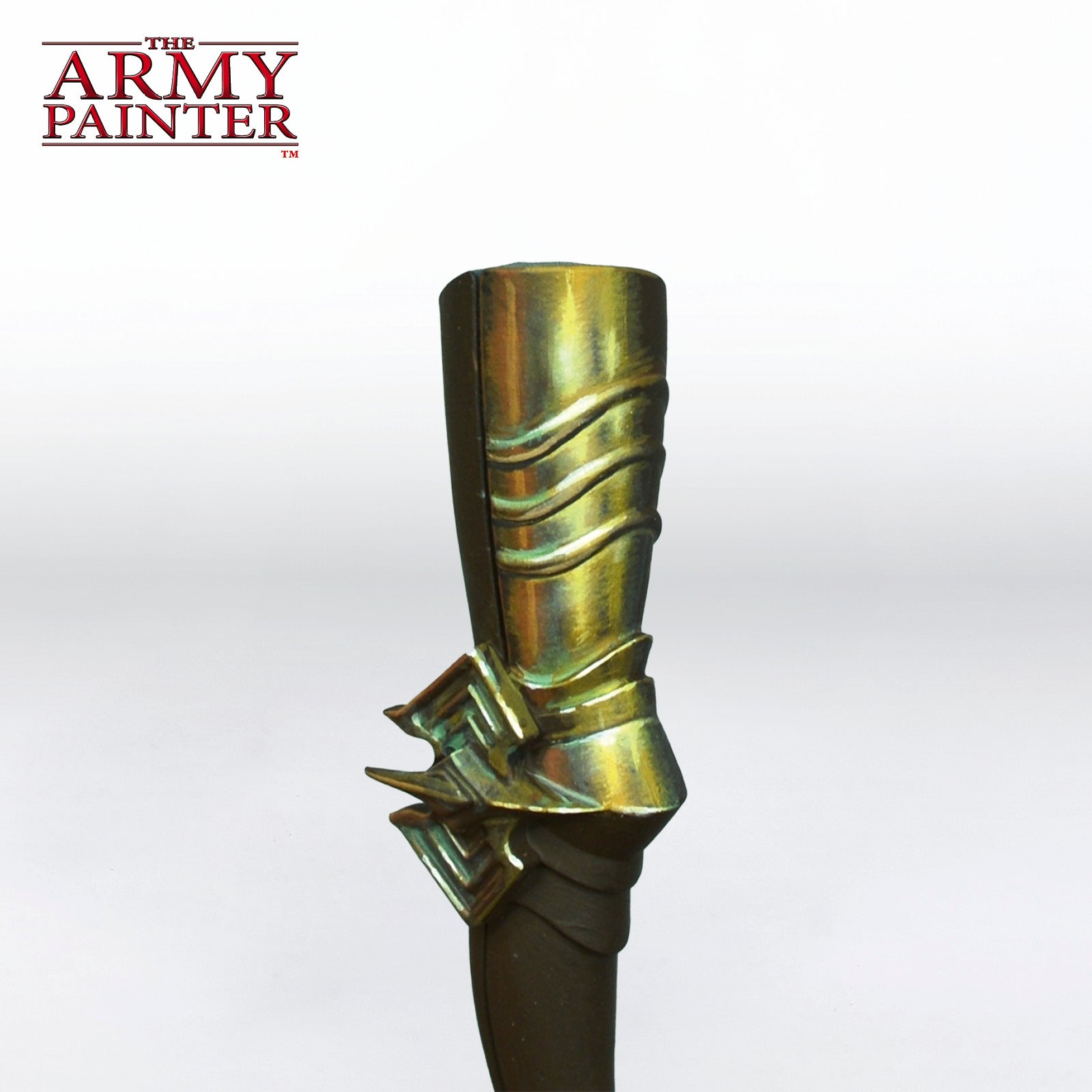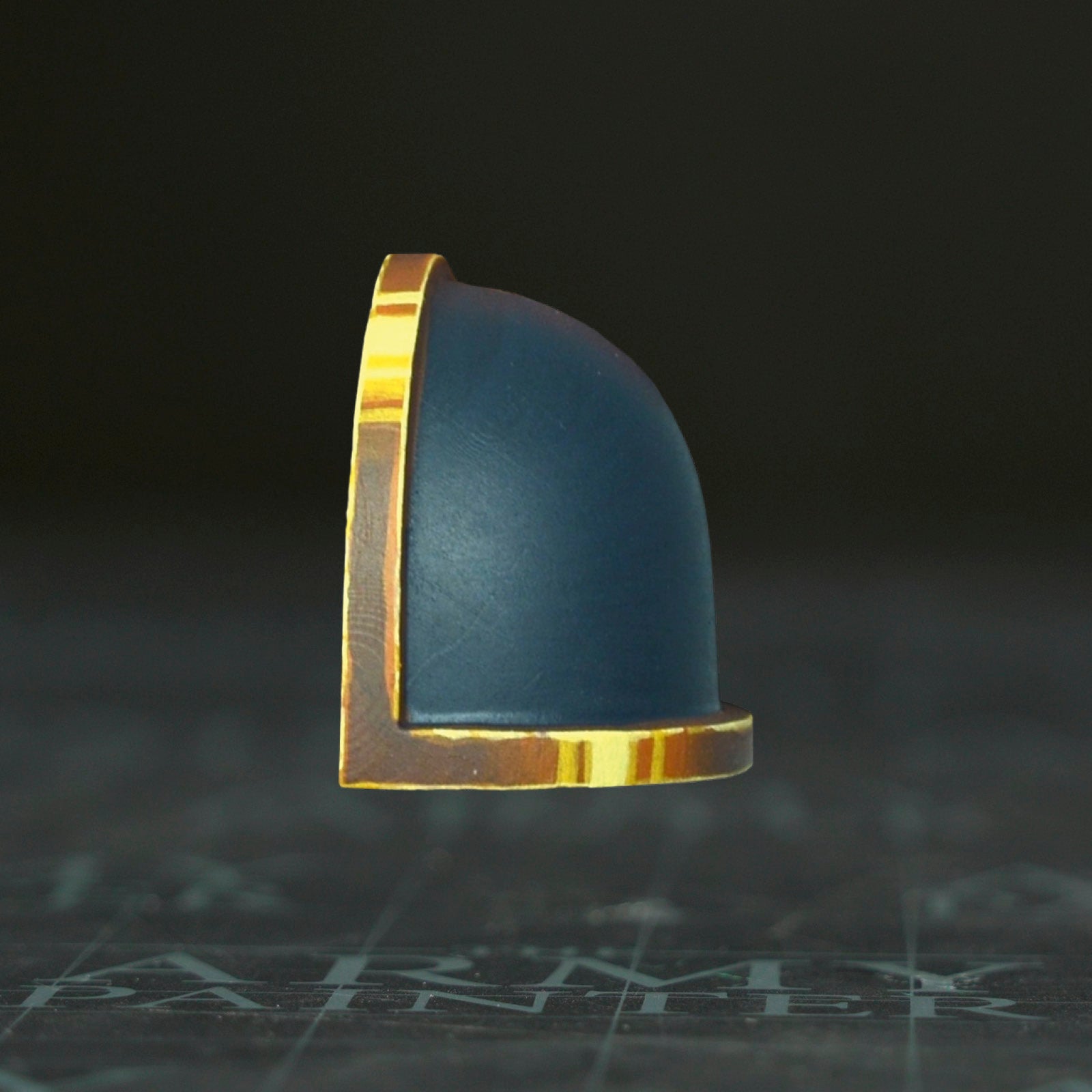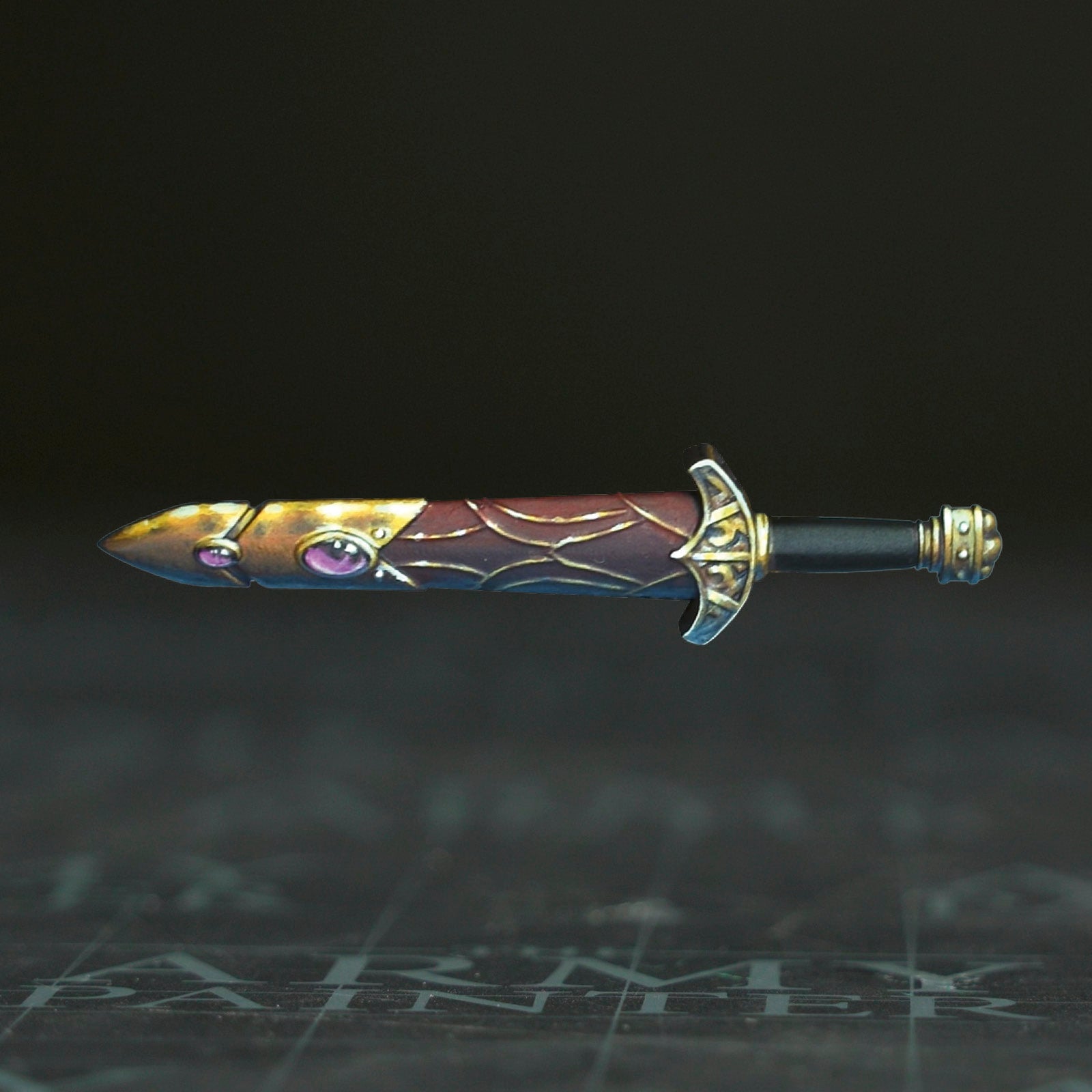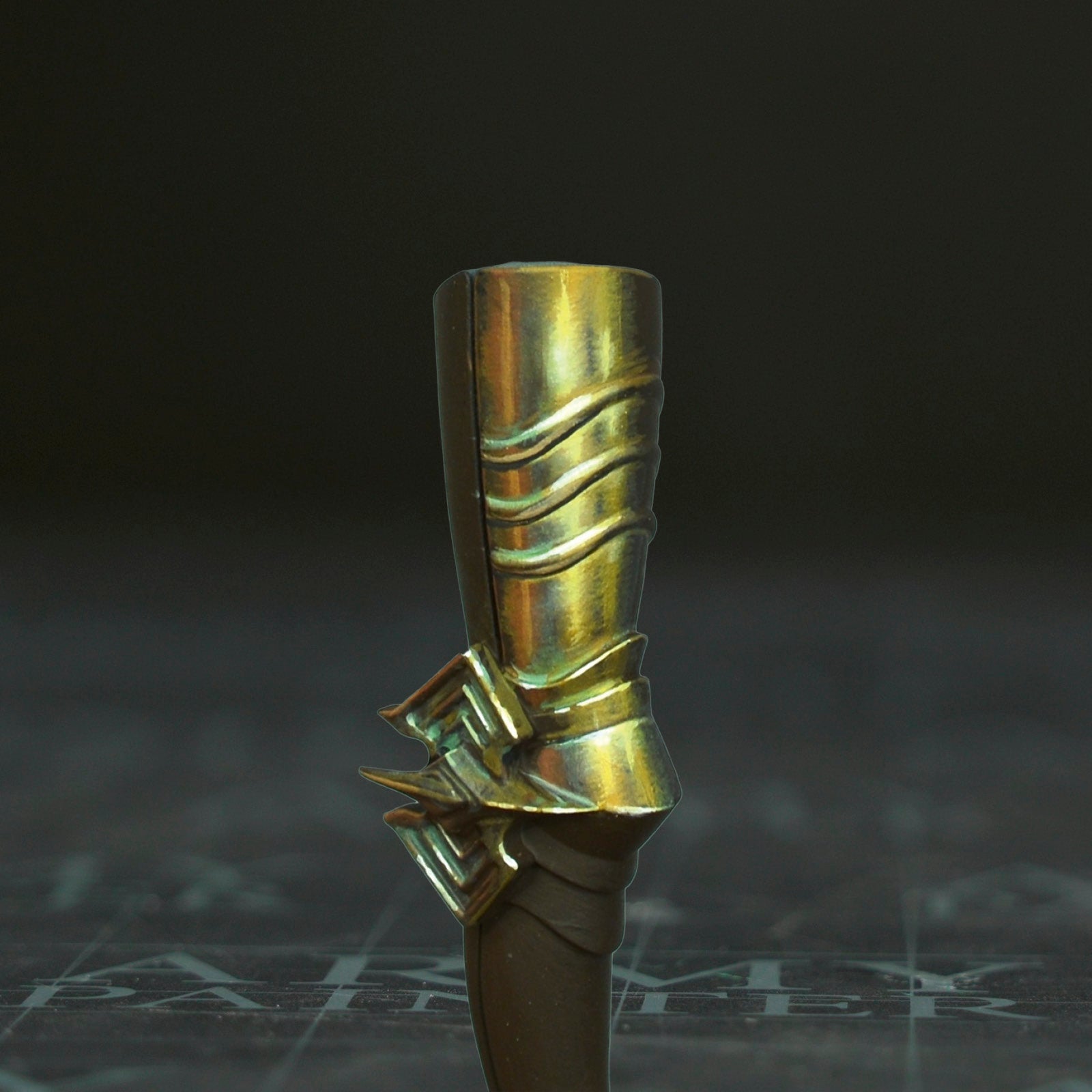How to Paint
Non-Metallic Gold

Welcome to the first instalment of The Army Painter Academy Masterclass: a series where we break down how we paint a miniature step-by-step, complete with pictures for every bit of paint applied along the way.
The allure of painting Non-Metallic Metals, or NMM, may seem like a daunting task to many of us. Long the hallmark of professional painters, this technique of painting the metallics on your models using normal acrylics, emulating the style of more traditional 2D artwork, is a stunning display of painting prowess. While this feat of brushwork definitely takes a bit more time and patience than applying a metallic paint it’s not unattainable.
For something long considered a “professional” level technique, we turned to a professional ourselves, Robert Karlsson, aka Rogland Studio, to show us, and you, how it’s done. Not only does he show how to conquer this elusive technique in a step-by-step format, but he’s even broken it down into Beginner, Intermediate, and Advanced levels, so no matter your experience, there’s an on-ramp for you to join the NMM train.
Robert: Why would we want to paint metal with normal paint, since we can just slap on some metallic paint? Metallic paint, in my opinion, doesn't reflect anything by itself on such a small surface as on a miniature, and if you want realism or to take the next step in your painting, then Non-Metallic Metal (NMM) is for you. You can control reflections and light exactly how you want, or exactly what environment the character is in, by adding colours from the environment, such as greens, browns, blues, etc.
NMM can be painted in different ways depending on experience and style. It also varies depending on the complexity of the area we are painting. For the Beginner tutorial, I demonstrate the basics on a fairly simple and familiar part for many hobbyists—a shoulder pad from a Space Marine! Whatever metal you are painting, gold, silver, chrome, and so on, we use a similar technique but with a different approach, such as a polished metal surface, dull, or even rusty and worn.
Let's get painting!
With that, your models are done!
Be sure to tell us what you thought of this tutorial format, if you have any suggestions for improvements in the future, or even which models you want us to tackle.
If you paint your own model following one of these guides, tag it with #thearmypainteracademy to share your work!
